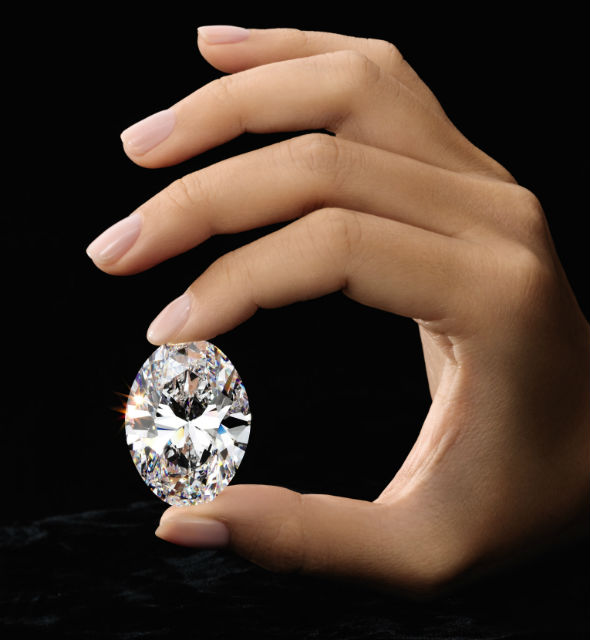
HONG KONG – A spectacular 88.22-carat diamond sold at auction today for HK$108 million / US$13.8 million / £10.6 million at Sotheby’s in Hong Kong.
One of only three oval diamonds of over 50 carats to appear at auction in living memory, and the largest to be auctioned in over five years, it was acquired by a Japanese private collector who first saw the stone while on exhibit in Japan. Immediately after the sale, he named the precious stone, the “Manami Star,” after his eldest daughter. Pursued by three bidders, the diamond eclipsed its estimate of HK$88-100 million (US$11.2-12.7 million) and established a price per carat of HK$1,224,133 (US$156,150). The brilliant oval diamond is rated D color, flawless, type IIa.
Perfect according to every critical criterion, the diamond has achieved the highest rankings under each of the standards by which the quality of a stone is judged (the four C’s). The diamond is D color (the highest grade for a white diamond); of exceptional clarity (it is completely flawless, both internally and externally), and has excellent polish and symmetry. As with the Koh-i-noor diamond (also oval) and the Cullinan I, which are part of the British Crown Jewels, the stone belongs to the rare subgroup comprising less than 2 percent of all gem diamonds, known as Type IIa. Diamonds in this group are the most chemically pure type of diamond and often have exceptional optical transparency.
Finding a rough diamond that allows the cutter to fashion a stone of over 80 carats is a true and very rare discovery. The 242-carat rough stone which yielded the diamond was discovered in Botswana in the mine of Jwaneng, a mine owned in partnership by De Beers and the government of Botswana and known for producing roughs of the highest quality. Following its discovery, the rough was cut and polished over a period of intense months to produce a symmetrical and striking oval brilliant diamond. Given the elongated shape of the rough the oval shape was chosen to preserve the greatest amount of weight. Great skill and precision was needed to cut a stone of this importance – a level of expertise and craftsmanship possessed by only a small handful of cutters in the world.

